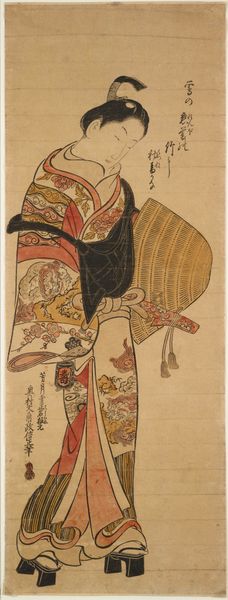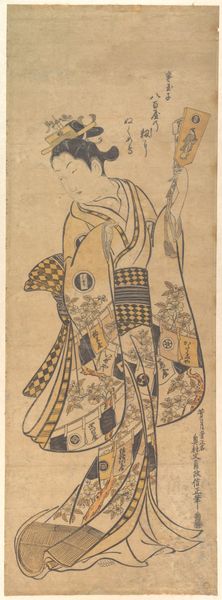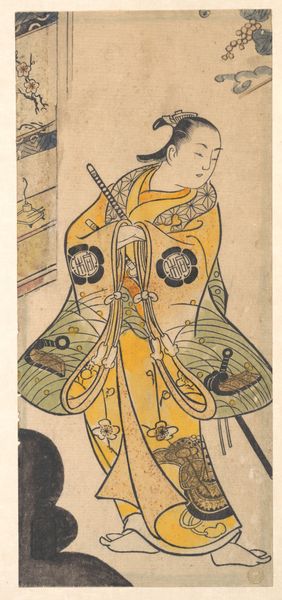
painting, print, ink, woodblock-print
#
portrait
#
ink painting
#
painting
# print
#
asian-art
#
ukiyo-e
#
ink
#
woodblock-print
#
genre-painting
Dimensions: 28 1/4 × 5 1/4 in.
Copyright: Public Domain
This is Suzuki Harunobu’s woodblock print, "The Kagura Dance". Harunobu was a leading printmaker in Edo-period Japan. He is renowned for his innovations in full-color printing, a technique that revolutionized ukiyo-e art, or "pictures of the floating world," as it was known. Here, a courtesan performs the Kagura dance, traditionally a sacred Shinto ritual performed for the gods. During Harunobu’s time, these dances had become secularized, performed in the pleasure districts of Edo. What does it mean to take a sacred ritual and transport it into the floating world? A world that blurs the boundaries between the divine and the everyday, inviting us to contemplate the shifting nature of identity and tradition. Harunobu's prints often portrayed women from different social classes, reflecting a changing urban culture. These images are not just snapshots of everyday life, but complex narratives about gender, class, and the performance of identity. The artist invites us to consider how these performances reflect societal values, anxieties, and aspirations.
Comments
No comments
Be the first to comment and join the conversation on the ultimate creative platform.













